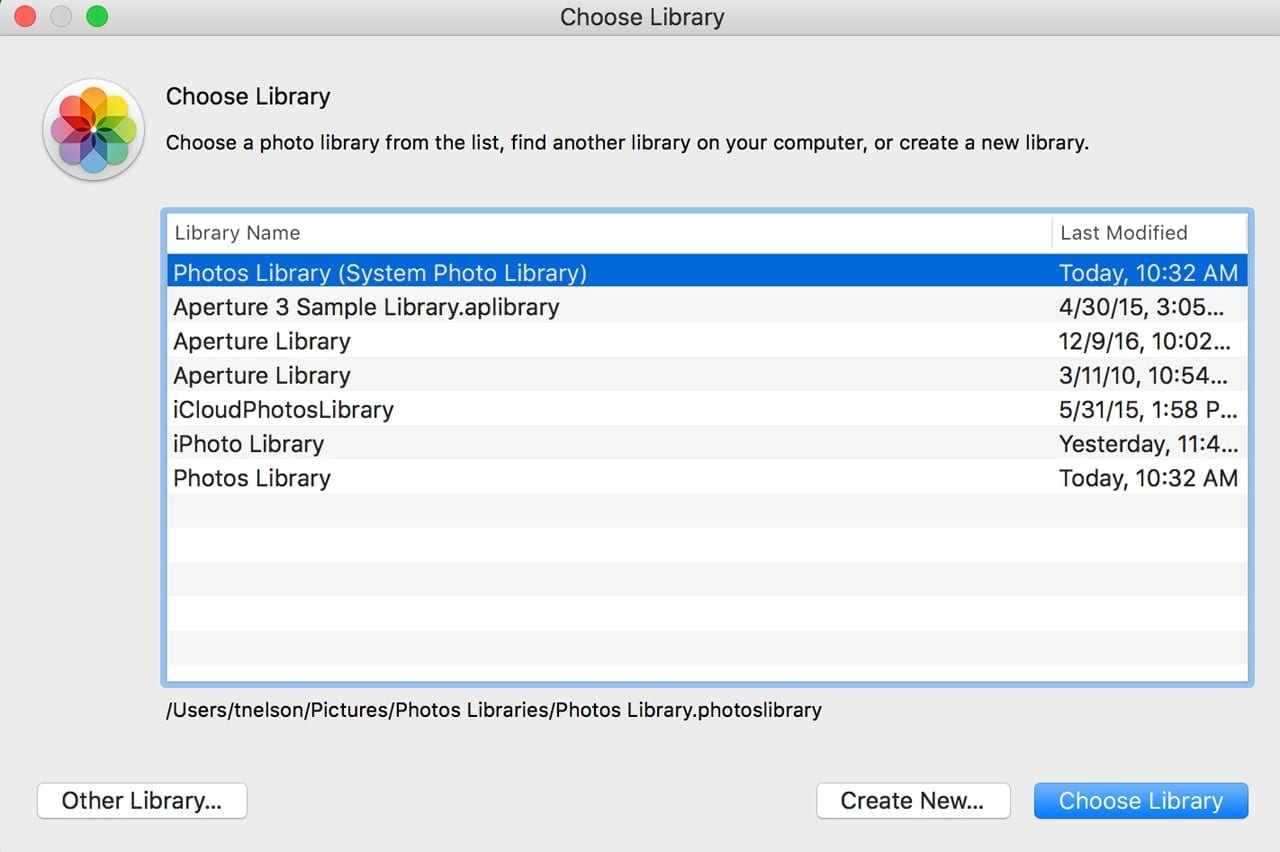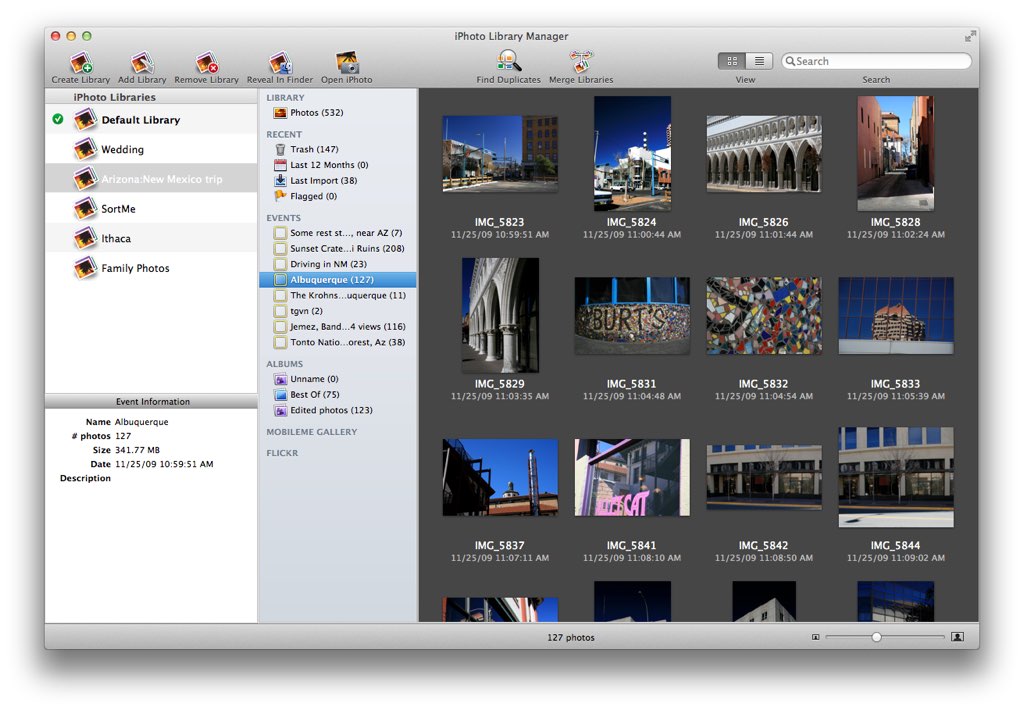Bricscad ucs. Home > Articles > Apple > Digital Photography
Using iPhoto Library Manager, I copied various events into the new Library avoiding the aliased images I planned to work with later. By mistake, I copied a folder that included some aliased pictures, but when I peeked into the iPhoto Library package contents I discovered the original jpg file, not the alias from the former Library, had been. Using iPhoto Library Manager, I couldn’t find anything missing that should be there. It’s more like an app with fries and a coke thrown in and upsized. You knew you wanted some easy way of managing multiple iPhoto libraries, and with this app you get a whole lot of extra features you didn’t realize you needed and won’t be able to live. Addresses an issue that could cause iPhoto to quit unexpectedly while syncing to Facebook; Resolves an issue that could cause calendar text to appear at the wrong font size, resulting in order cancellation; Fixes an issue that could cause books to have an incorrect number of pages after rearranging two-page spreads; Includes stability improvements. Apple used to offer Aperture to help organize photos, but there are alternatives available such as iPhoto Library Manager ($29.95, fatcatsoftware.com), the same trick works in iPhoto as well. To recover photos from iPhoto library, I would like to recommend Wondershare data recovery for mac, a capable iphoto recovery program that is able to recover iPhoto library as well as perform iPhoto trash recovery. No matter how photos lost from your iPhoto library, you can get them back in a few clicks with this tool.
␡- iPhoto Library Manager
Like this article? We recommend
Like this article? We recommend
Iphoto Library Manager Tutorial
iPhoto Library Manager
Another aspect of iPhoto that can be problematic is that it forces each user to store all their photos in a single library. Download cablemodem network & wireless cards driver. For many iPhoto users this might not be a problem, but for others having the flexibility to have separate libraries (as iTunes 7 allows) can be very beneficial. Users who use iPhoto for professional and/or consumer functions, such as teachers using iPhoto for class projects, realtors using iPhoto for building photographs, and budding photographers who have yet to invest in Aperture might all appreciate the ability to work with iPhoto but probably don’t want to mix their professional and personal libraries together. Also, users of portable Macs with limited hard drive space might prefer to keep their complete iPhoto library on an external hard drive, but still want to have access to a smaller subset of pictures on their computer at all times.

iPhoto Library Manager enables you to create and manage multiple iPhoto libraries, which can be stored on a Mac’s internal hard drive, an external hard drive or even in a shared folder on another Mac. It also supports setting permissions on iPhoto libraries for use by multiple users—a feature that is great for both home use and for classroom or office use. In addition to supporting multiple libraries, iPhoto Library provides some support for rebuilding corrupted iPhoto libraries and for extracting images from damaged libraries. If you choose to register iPhoto Library Manager for $19.95, it will also enable you to copy images between libraries, to merge libraries, and to sync photos from multiple libraries to an iPod.
Prepare your external drive
You can store your library on an external storage device, such as a USB or Thunderbolt drive formatted as APFS or Mac OS Extended (Journaled). However, you can't move your library to a disk that's used for Time Machine backups.
To prevent data loss, Apple doesn't recommend storing photo libraries on external storage devices like SD cards and USB flash drives, or drives that are shared on a network.
Move your Photos library to an external storage device
- Quit Photos.
- In the Finder, go to the external drive where you want to store your library.
- In another Finder window, find your library. The default location is Users > [username] > Pictures, and it's named Photos Library.
- Drag your library to its new location on the external drive. If you see an error, select your external drive's icon in the Finder, then choose File > Get Info. If the information under Sharing & Permissions isn't visible, click the triangle , then make sure the 'Ignore ownership on this volume' checkbox is selected. If it's not selected, click the lock button to unlock it, enter an administrator name and password, then select the checkbox.*
- After the move is finished, double-click Photos Library in its new location to open it.
- If you use iCloud Photo Library, designate this library as the System Photo Library.
Delete original library to save space
After you open your library from its new location and make sure that it works as expected, you can delete the library from its original location.
In a Finder window, go back to your Pictures folder (or whichever folder you copied your library from) and move Photos Library to the trash. Then choose Finder > Empty Trash to delete the library and reclaim disk space.
Iphoto Library Manager

Open another Photos library
If you have multiple libraries, here's how to open a different one:
- Quit Photos.
- Press and hold the Option key while you open Photos.
- Select the library that you want to open, then click Choose Library.
Photos uses this library until you open a different one.
Learn more
Iphoto Library Manager Download
If you have a permissions issue with your library, you might be able to resolve the issue by using the Photos library repair tool.

* If the volume isn't formatted APFS or Mac OS Extended (Journaled), or has been used for Time Machine backups but hasn't been erased, this checkbox will either not be present, or won't be selectable after unlocking. Erase and reformat the drive for this option to be available.

